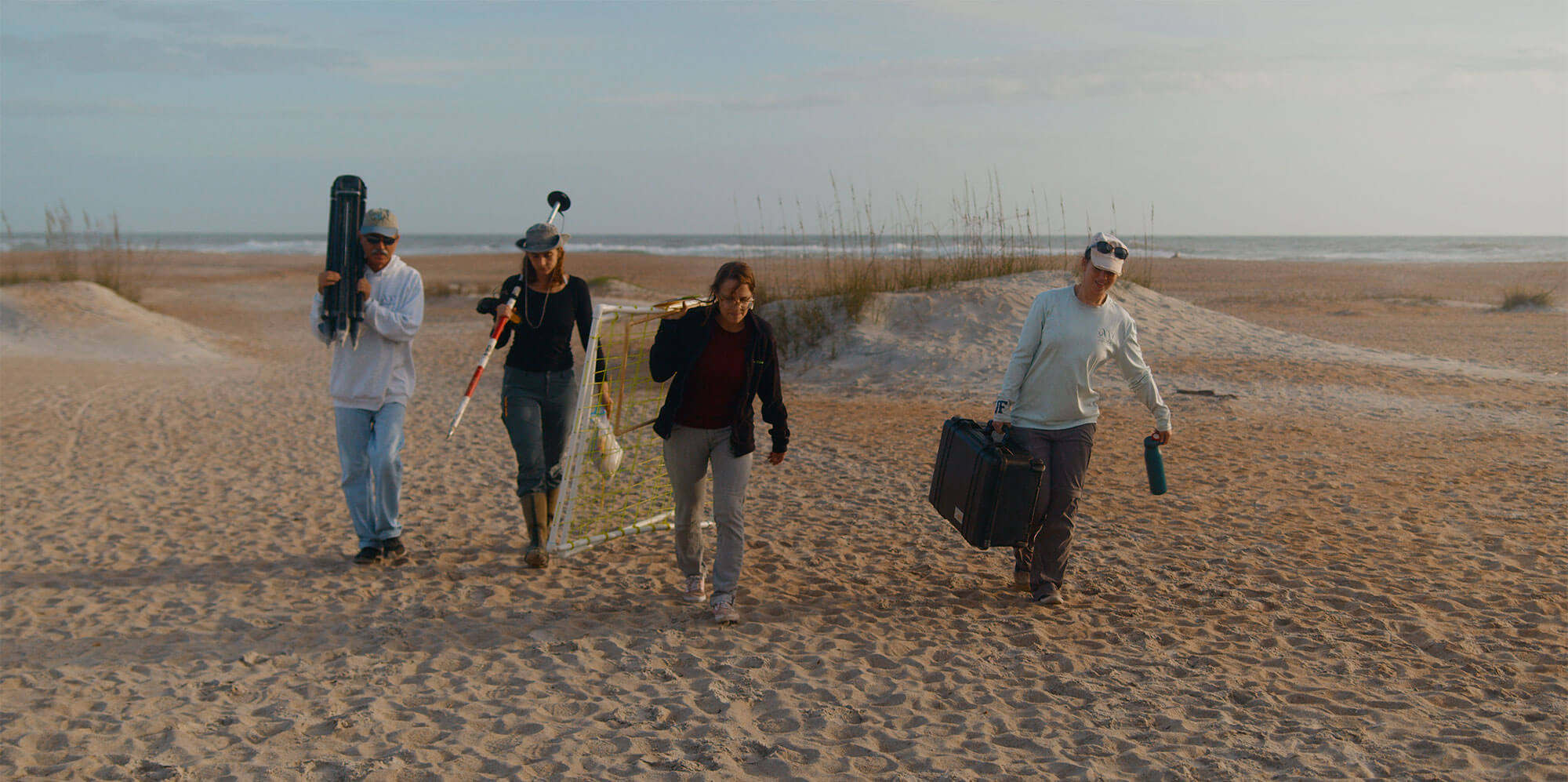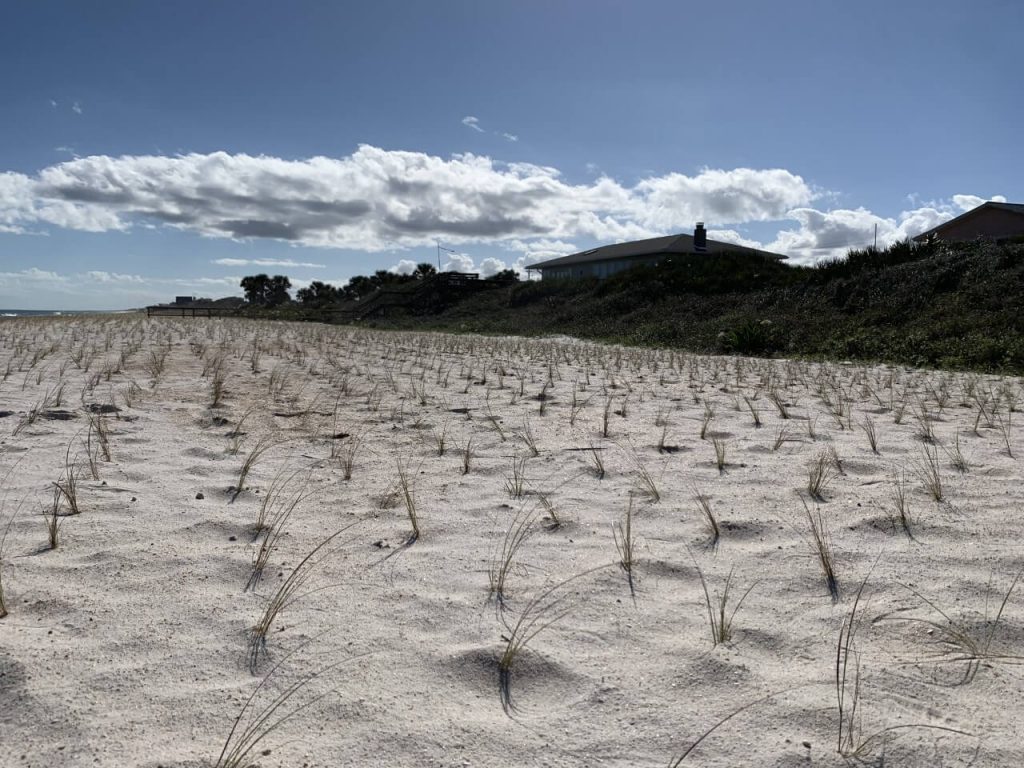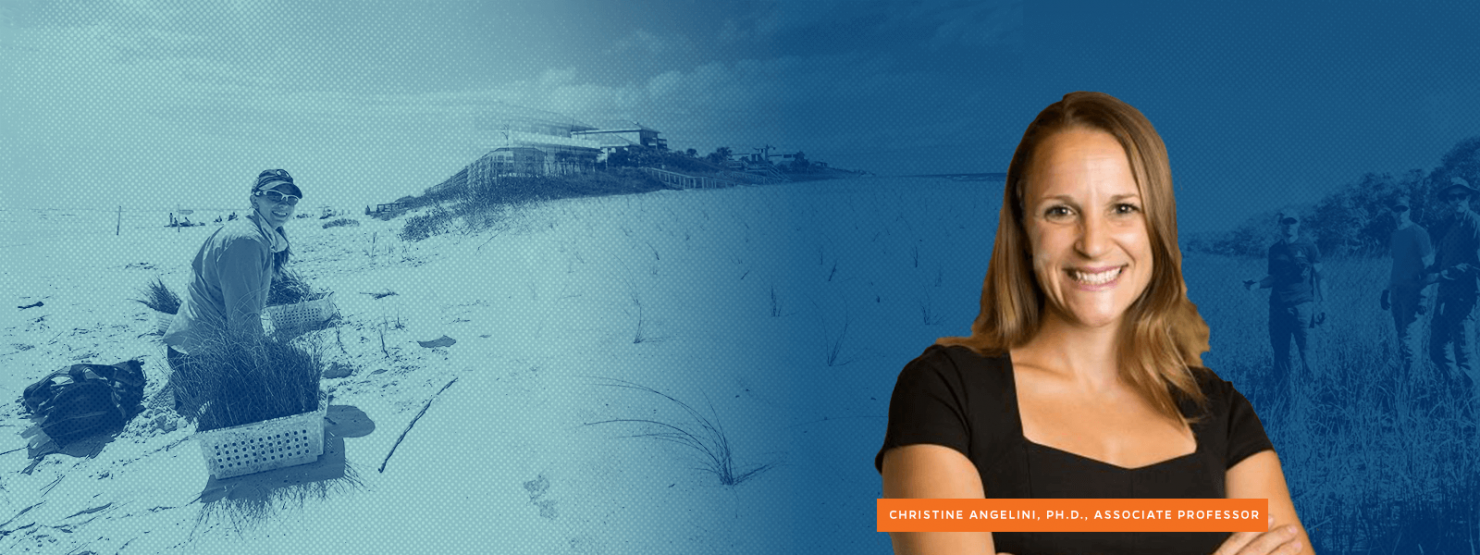In the coastal dunes, salt marshes and oyster beds of St. Augustine, Fla., researchers from the Center for Coastal Solutions (CCS) at the University of Florida have found a perfect laboratory for a whole new kind of engineering. For more than 10 years, the Engineering Research and Development Center (ERDC), the scientific division of the U.S. Army Corps of Engineers (USACE), has been changing the nature of their large-scale water resources engineering projects, going beyond the monolithic, ‘hard’ engineering solutions of dredging, dams and levees. Realizing the traditional approach wasn’t having the desired impact on the environment nor creating lasting fixes, ERDC birthed the Engineering with Nature (EWN) Initiative to innovate approaches that intentionally integrate natural features, such as marshes, reefs and dunes, into engineering solutions to capitalize on their low-cost, highly effective ability to stabilize sediments, control water flow, and provide other ecosystem services. With a catalog of proof-of-concept projects now under their belt, ERDC recently established a Network for Engineering with Nature to further propel the EWN program by creating a nexus of innovation and knowledge exchange between university researchers, private, NGO, and public sector partners, and the USACE. Together, they’re enhancing the nation’s ability to address the impacts of natural disasters and protect our fragile natural resources.
With $3 million in government funding through the USACE, a team of UF researchers is now giving the Corps a sustainable framework for projects in this oft-battered ecosystem in Florida’s First Coast, where wind, storm waves and tides relentlessly threaten to undermine mitigation efforts. Led by Christine Angelini, Ph.D., Director of the Center for Coastal Solutions, along with colleagues in the Engineering School of Sustainable Infrastructure and Environment (ESSIE) and Department of Geological Sciences, the multidisciplinary team hopes to provide these ecosystems the protection necessary to withstand and even thrive under unpredictable climatic conditions and the burden of their many uses — commercial, residential, recreational and tourism.
In search of a longer-lasting, cost-effective fix
“It became blatantly obvious to the USACE that, the more they can work with the natural systems instead of fighting against them in the way they engineer our waterways and beaches, the better outcomes they’re going to have, not just for the performance of their solutions, but also in terms of the natural benefits,” said Dr. Angelini, who directs UF’s coastal-focused cohort of the nationwide NEWN, that includes participants from the University of Georgia, Arizona State University and the University of Oklahoma, collaborating with the USACE to tackle regional issues related to freshwater systems, water storage, flood plain dynamics and others.
Dr. Angelini explained that, to meet its core task of maintaining our nation’s vital waterway infrastructure, such as navigation channels, ports and flood protection structures, the USACE and other engineering entities have found it far easier to permit and secure funding for familiar hard engineering solutions, even though they often run contrary from a physical or biological standpoint. “Our goal is to work for them to provide some scientific flexibility and creativity where they don’t have the latitude to do that — restorative engineering on a scale that has tremendous implications for the future of these remediation projects in our economically and ecologically valuable coastal ecosystems,” she said.
The State of Florida has been an historic cautionary tale for remediation and restoration initiatives — especially in the fragile Everglades — where long delays and exponentially growing budgets have often only resulted in unintended consequences, either for the ecosystem or for those who live on their fringes. Applying a deeper understanding of the science, drilling down into the ecological components to strike a balance between the earth-moving capacity of the USACE and the disciplinary research expertise in the field, promises to bring longevity and efficiency to these projects.
“Using nature as part of an engineering solution capitalizes on the ability of a natural system to adjust to the changing environment in ways that concrete, engineered structures do not,” said Dr. Todd Bridges, senior research scientist with the ERDC and the mastermind/director of the Engineering with Nature initiative. “In many instances, combinations of natural and engineered features provide an optimized solution that provides needed flood risk management or navigation channel improvement while also providing habitat, recreation opportunities and lower maintenance costs.”

Partners align for sustainable impact in a large, living laboratory
The UF team is on track to provide invaluable insights for the Jacksonville District of the USACE, the St. John’s Coastal Resource Program, the Guana Tolomato Matanzas National Estuarine Research Program and coastal engineering firms, guardians on the front line for the area’s ecological viability. Dr. Angelini’s project focuses on coastal wetland degradation, coastal wetland remediation and restoration of coastal dunes, and they will continuously share their findings in support of resilience planning and restoration efforts in the region as the project unfolds.
Hallie Fischman, a second-year Ph.D. student in Environmental Engineering Sciences working under Dr. Angelini, has researched coastal dune restorations before in Florida, Georgia and Massachusetts, but says the new EWN project is by far the largest dune project she ever worked on. “Here, we have the unique opportunity to design large-scale experiments and test solutions at a magnitude that has real-world restoration implications. Our current field experiment is looking at how different plant species, planting densities and fertilizer additions can be used to improve sand dune restoration and build resilient dunes as quickly as possible.”
One focus of this experimental work is a recently nourished dune system in Ponte Vedra, Fla., a location battered by a recent series of hurricanes and Nor’easters. Coastal managers involved in the project are eager to find strategies to accelerate post-storm dune recovery to protect adjacent homes, roads, wildlife habitat and the region’s beach-dependent tourism economy.
Formulating a multidisciplinary attack plan
 As an ecologist, Dr. Angelini is focused on the biological components of the coastal landscape, working with plants and animals in the coastal zone to investigate how they interact with one another and how they’re being reshaped by climate change and human activities — whether negative, like overfishing, or positive, like human activities to restore the biology of the coastal zone and make it more robust. “We’re looking for opportunities to enhance how much below-ground biomass and root material the plants inject into the ground to enhance the stabilization function during storm events. The overarching objective is to inform on how we better stabilize and even augment our beach and dune systems to sustain them in a habitat that is used by wildlife, for tourism and provides storm protection for critical infrastructure and peoples’ homes and businesses along the beach.”
As an ecologist, Dr. Angelini is focused on the biological components of the coastal landscape, working with plants and animals in the coastal zone to investigate how they interact with one another and how they’re being reshaped by climate change and human activities — whether negative, like overfishing, or positive, like human activities to restore the biology of the coastal zone and make it more robust. “We’re looking for opportunities to enhance how much below-ground biomass and root material the plants inject into the ground to enhance the stabilization function during storm events. The overarching objective is to inform on how we better stabilize and even augment our beach and dune systems to sustain them in a habitat that is used by wildlife, for tourism and provides storm protection for critical infrastructure and peoples’ homes and businesses along the beach.”
A second crucial player in UF’s three-pronged beach-dune project is Maitane Olabarrieta, Ph.D., associate professor of Coastal Engineering in ESSIE, who brings her considerable physical oceanography expertise to bear through numerical modelling that indicates how the current’s profile of the beaches and the dunes (the slopes and the heights) effects their vulnerability to erosion.
UF Geological Sciences associate professor Pete Adams, Ph.D., helps to provide a fully formed perspective of changes to the physical landscape, upon which the life of the ecosystem operates. Using drone imagery, high-resolution GPS and hydrodynamic instrumentation, Adams and his graduate students are documenting variations in the geomorphology of the shallow subtidal seafloor, the intertidal beaches and the supratidal dunes. Their observations and measurements compared to the historic and contemporary rates of landform change reveal the relative contributions of the processes driving the changing beach and dune ecosystems.
With the threats posed by global warming, sea level rise, biodiversity loss and a greater frequency and intensity of storms, Dr. Angelini stresses the importance of incorporating nature-based solutions into coastal engineering projects to reduce stressors in a way that traditional built infrastructure cannot. “Sand dune vegetation can regrow and sustainably trap sand after a storm, but a sea wall will need to be repaired. Building in nature-based approaches will allow us to add more tools in the coastal restoration and coastal protection toolbox, and hopefully some of our findings can be used by practitioners in the future.”
